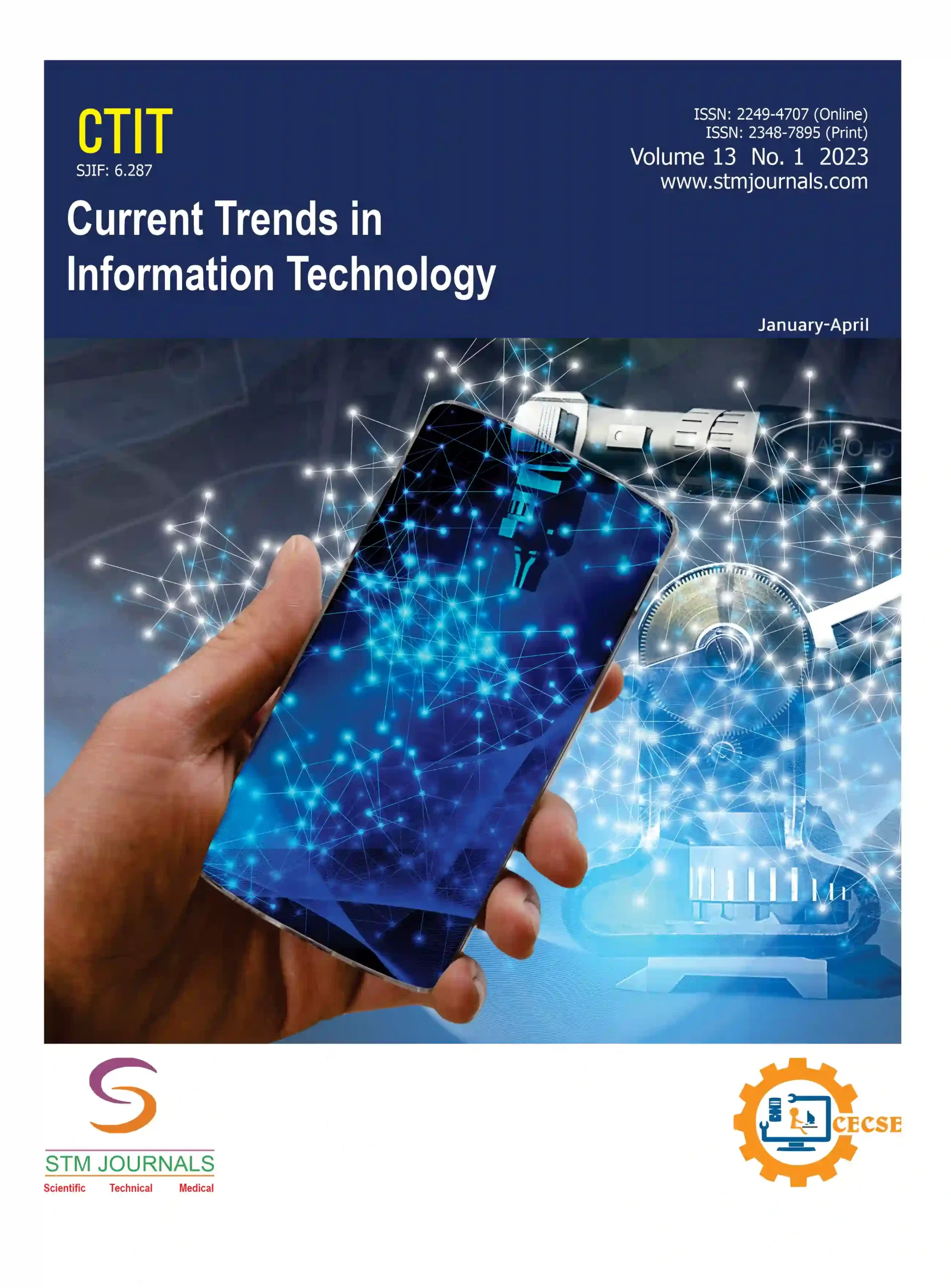Gangisetty Ravishankar,
Chirag S.,
Kempanna M.,
- Student, Department of Artificial Intelligence and Machine Learning, Bangalore Institute of Technology, Bengaluru, Karnataka, India
- Student, Department of Artificial Intelligence and Machine Learning, Bangalore Institute of Technology, Bengaluru, Karnataka, India
- Associate Professor, Department of Artificial Intelligence and Machine Learning, Bangalore Institute of Technology, Bengaluru, Karnataka, India
Abstract
Bamboo farming is essential for sustainable agriculture and environmental preservation. This project presents BambooBuddy, a chatbot developed to assist farmers and surveyors in managing bamboo-related inquiries. The system leverages a structured dataset stored in recommendations.csv to provide precise and relevant recommendations based on user queries. By utilizing the flask framework for web development and incorporating Cohere’s natural language processing capabilities, BambooBuddy facilitates seamless interaction and enhances user experience. The chatbot addresses key topics such as ideal soil conditions, irrigation practices, and maintenance techniques, contributing to informed decision-making in bamboo farming. The results demonstrate the effectiveness of the chatbot in delivering actionable insights and supporting the promotion of bamboo as an eco-friendly crop.
Keywords: Bamboo cultivation, chatbot, natural language processing, flask, recommendations, sustainable agriculture, soil conditions, irrigation practices, user interaction, environmental conservation
[This article belongs to Current Trends in Information Technology ]
Gangisetty Ravishankar, Chirag S., Kempanna M.. The BambooBuddy: An AI-powered Chatbot for Enhancing Bamboo Yield in India. Current Trends in Information Technology. 2025; 15(01):12-18.
Gangisetty Ravishankar, Chirag S., Kempanna M.. The BambooBuddy: An AI-powered Chatbot for Enhancing Bamboo Yield in India. Current Trends in Information Technology. 2025; 15(01):12-18. Available from: https://journals.stmjournals.com/ctit/article=2025/view=192932
References
- Zhou JB, Tang D, He L, Lin S, Lei JH, Sun H, et al. Machine learning model for anti-cancer drug combinations: Analysis, prediction, and validation. Pharmacol Res. 2023;194:106830. DOI: 10.1016/j.phrs.2023.106830. PubMed: 37343647.
- Meystre S, Haug PJ. Natural language processing to extract medical problems from electronic clinical documents: Performance evaluation. J Biomed Inform. 2006;39(5):589–99. DOI: 10.1016/j.jbi.2005.11.004. PubMed: 16359928.
- Hasan ME, Islam MJ, Islam MR, Chen D, Sanin C, Xu G. Applications of artificial intelligence for health informatics: A systematic review. J Artif Intell Med Sci. 2023;4:19–46. DOI: 10.55578/joaims.230920.001.
- Wongvibulsin S, Wu KC, Zeger SL. Clinical risk prediction with random forests for survival, longitudinal, and multivariate (RF-SLAM) data analysis. BMC Med Res Methodol. 2019;20(1):1. DOI: 10.1186/s12874-019-0863-0. PubMed: 31888507.
- Fahad SKA, Yahya AE. Big data visualization: Allotting by R and Python with GUI tools. 2018 International Conference on Smart Computing and Electronic Enterprise (ICSCEE), Shah Alam, Malaysia, 2018, pp. 1–8. DOI: 10.1109/ICSCEE.2018.8538413.
- Deimazar G, Sheikhtaheri A. Machine learning models to detect and predict patient safety events using electronic health records: A systematic review. Int J Med Inform. 2023;180:105246. DOI: 10.1016/j.ijmedinf.2023.105246. PubMed: 37837710.
- Bansal M, Goyal A, Choudhary A. A comparative analysis of K-nearest neighbor, genetic, support vector machine, decision tree, and long short term memory algorithms in machine learning. Decis Anal J. 2022;3:100071. DOI: 10.1016/j.dajour.2022.100071.
- Tomašev N, Harris N, Baur S, Mottram A, Glorot X, Rae JW, et al. Use of deep learning to develop continuous-risk models for adverse event prediction from electronic health records. Nat Protoc. 2021;16:2765–87. DOI: 10.1038/s41596-021-00513-5. PubMed: 33953393.
- Maruf S, Javed K, Babri HA. Improving text classification performance with random forests-based feature selection. Arab J Sci Eng. 2016;41:951–64. DOI: 10.1007/s13369-015-1945-x.
- Ibrahim MS, Saber S. Machine learning and predictive analytics: Advancing disease prevention in healthcare. J Contemp Healthc Anal. 2023;14:25–39, 53–71. DOI: 10.1016/j.jpharm.2023.01.002.
- Li Y, Chen S, Rapakoulia T, Kuwahara H, Yip KY, Gao X. Deep learning identifies and quantifies recombination hotspot determinants. Bioinformatics. 2022;38:2683–91. DOI: 10.1093/bioinformatics/btac234. PubMed: 35561158.
- Rajkomar A, Oren E, Chen K, Dai AM, Hajaj N, Hardt M, et al. Deep learning for predicting hospital readmissions and adverse outcomes. Nat Med. 2023;29:1125–35. DOI: 10.1038/s41591-023-01678-1.
- Harpaz R, Chase HS, Friedman C, Kim P, Friedman C, Perrone J. Data mining approaches for detecting adverse events related to prescription drugs using FAERS data. IEEE Trans Knowl Data Eng. 2023;35:1604–17. DOI: 10.1109/TKDE.2023.3045912.
- Eguchi R, Hamano M, Iwata M, Nakamura T, Oki S, Yamanishi Y. TRANSDIRE: Data-driven direct reprogramming by a pioneer factor-guided trans-omics approach. Bioinformatics. 2022;38:2839–46. DOI: 10.1093/bioinformatics/btac209. PubMed: 35561200.
- Wang X, et al. Towards the design and implementation of an image-based underwater object detection system. J Imaging. 2021;7. DOI: PMC8231565.
- Yen TM, Ji YJ, Lee JS. Estimating biomass production and carbon storage for a fast-growing makino bamboo (Phyllostachys makinoi) plant based on the diameter distribution model. For Ecol Manage. 2010;260:339–74. DOI: 10.1016/j.foreco.2010.04.021.
- Singh J, Sharma R, Dhakad AK, Chauhan SK. Defining growth, quality, and biomass production of different bamboo species in central plains of Punjab. J Pharmacogn Phytochem. 2018;7:1328–32.
- Sawarkar AD, Shrimankar DD, Kumar A, Kumar A, Singh E, Singh L, et al. Commercial clustering of sustainable bamboo species in India. Ind Crops Prod. 2020;154:112693. DOI: 10.1016/j.indcrop.2020.112693.
- Mary C, Sukumar A, Nambisan H. Text based smart answering system in agriculture using RNN. [Preprint]. agriRxiv. 2021. DOI: 10.31220/agriRxiv.2021.00071.
- Sawarkar AD, Shrimankar DD, Sahu SK, Singh L, Bokde ND, Kumar M. Commercial clustering of Indian bamboo species using machine learning techniques. 2023 2nd International Conference on Paradigm Shifts in Communications Embedded Systems, Machine Learning and Signal Processing (PCEMS), Nagpur, India, 2023, pp. 1–5. DOI: 10.1109/PCEMS58491.2023.10136094.

Current Trends in Information Technology
| Volume | 15 |
| Issue | 01 |
| Received | 13/12/2024 |
| Accepted | 04/01/2025 |
| Published | 08/01/2025 |
| Publication Time | 26 Days |
PlumX Metrics
